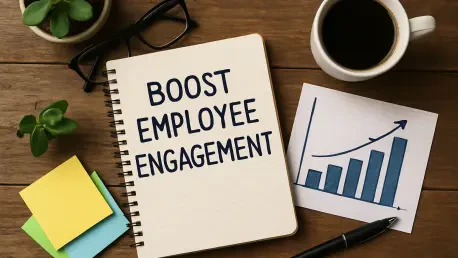Today, we’re thrilled to sit down with Sofia Khaira, a renowned specialist in diversity, equity, and inclusion, who has dedicated her career to transforming workplace cultures. With her deep expertise in talent management and development, Sofia has been instrumental in guiding organizations to build inclusive environments where employees feel valued and motivated. In this conversation, we’ll dive into the critical topics of employee engagement and motivation, exploring how emotional commitment impacts performance, the role of communication and purpose in fostering connection, and practical strategies for creating a thriving workplace that drives both individual and organizational success.
How do you personally define employee engagement, and why does it matter so much in today’s workplace?
To me, employee engagement is about the emotional bond someone feels with their organization and its goals. It’s not just showing up for a paycheck—it’s caring about the work you do and feeling like you’re part of something bigger. This matters today more than ever because the modern workforce craves purpose. When employees are engaged, they’re more productive, creative, and likely to stick around. I’ve seen firsthand how disengagement can lead to turnover and stagnation, while genuine connection fuels innovation and loyalty.
What role does emotional commitment play in an employee’s performance at work?
Emotional commitment is a game-changer. When employees feel connected to their company’s mission, they go beyond just completing tasks—they take ownership. They’re willing to put in extra effort during tough times and often exceed expectations. I remember working with a team where this commitment turned a struggling project around; people stayed late not because they had to, but because they believed in the outcome. That kind of dedication directly boosts performance and morale.
How would you describe motivation in the workplace, and where do you think it primarily comes from?
Motivation is that inner drive that pushes employees to do their best. It can come from within, like a passion for the role, or from external factors like bonuses or recognition. In my experience, while external rewards can give a quick boost, lasting motivation often stems from intrinsic factors—feeling valued, having a sense of purpose, or seeing growth opportunities. When people are motivated by what they do, not just what they get, the impact on their work is profound and sustainable.
In what ways have you seen engaged employees contribute to a company’s overall success?
Engaged employees are the backbone of any successful organization. They bring energy and ideas to the table, which directly impacts productivity and innovation. I’ve worked with companies where engaged teams consistently outperformed others, not just in numbers but in creativity—coming up with solutions no one else saw. They also build a positive reputation for the company by becoming advocates, whether through word-of-mouth or online reviews. Their commitment creates a ripple effect that lifts everyone up.
Why do you believe engagement is so critical for retaining talent and reducing turnover?
Engagement is key to retention because it makes employees feel seen and valued. When people feel disconnected or unappreciated, they’re quick to look for other opportunities, especially in today’s job market where options are plentiful. I’ve noticed that companies with high engagement often have lower turnover because employees aren’t just there for a job—they’re invested in the culture and mission. Creating that sense of belonging can save organizations the cost and effort of constant rehiring.
How does open and transparent communication influence employee engagement in your view?
Communication is the foundation of engagement. When it’s open and honest, employees feel trusted and included, which builds their connection to the organization. On the flip side, I’ve seen how a lack of clarity—whether about goals or changes—can make people feel out of the loop and disengaged. Two-way communication, where employees can voice ideas and concerns, is vital. It’s not just about leaders talking; it’s about listening and acting on feedback to show that every voice matters.
What’s the impact of connecting an employee’s role to the broader company mission on their motivation?
Linking someone’s daily work to the bigger picture can be incredibly motivating. When employees understand how their contributions fit into the company’s goals, they feel a sense of purpose. I recall a time when a leader took the time to explain how my team’s project aligned with the organization’s vision—it made the late nights feel worthwhile. That connection transforms routine tasks into meaningful efforts, driving motivation and a deeper commitment to the company’s success.
Can you share a strategy that you’ve found particularly effective for fostering a positive and inclusive work environment?
One strategy that stands out is prioritizing inclusivity through intentional policies and actions. This means creating spaces where everyone feels safe to share ideas, promoting teamwork, and supporting work-life balance. I’ve seen companies transform by implementing mentorship programs and wellness initiatives, which show employees they’re valued beyond their output. When people feel supported and respected, they’re more engaged and willing to give their best. It’s about building a culture of care, not just competition.
How can leaders and managers play a more active role in driving employee motivation and engagement?
Leaders set the tone for engagement. They need to be personally invested—showing empathy, communicating clearly, and recognizing efforts. I’ve worked under managers who made a huge difference just by being approachable and giving regular feedback. Training managers to be effective communicators and mentors is crucial, as is empowering them to give employees autonomy. When leaders model engagement and trust their teams, it creates a culture where motivation thrives naturally.
What is your forecast for the future of employee engagement and motivation in the evolving workplace?
I believe the future of engagement and motivation will center on personalization and well-being. As workplaces evolve with remote and hybrid models, companies will need to tailor their approaches—offering flexible benefits, focusing on mental health, and using technology to maintain connection. Employees will increasingly expect to be treated as individuals, not just cogs in a machine. Organizations that adapt by prioritizing purpose, inclusivity, and genuine care will stand out as employers of choice in the years ahead.









